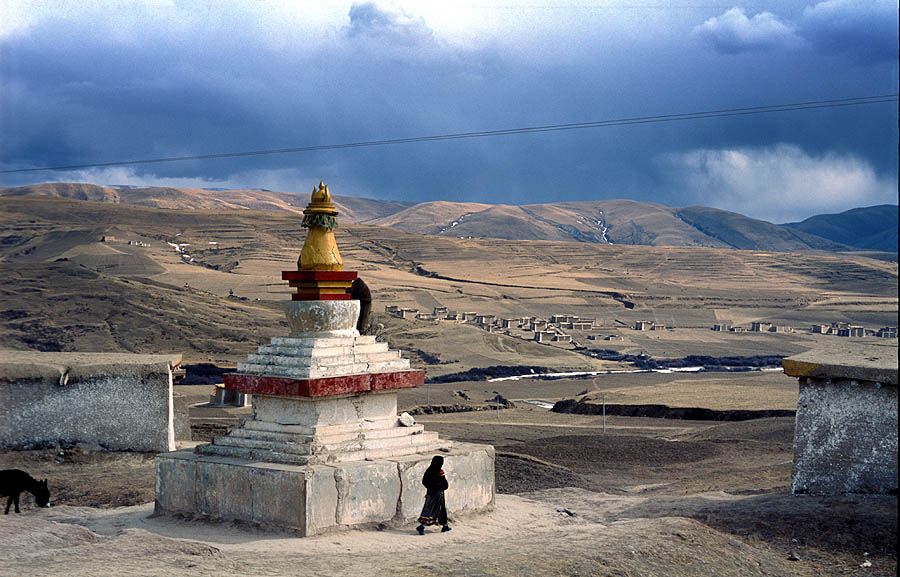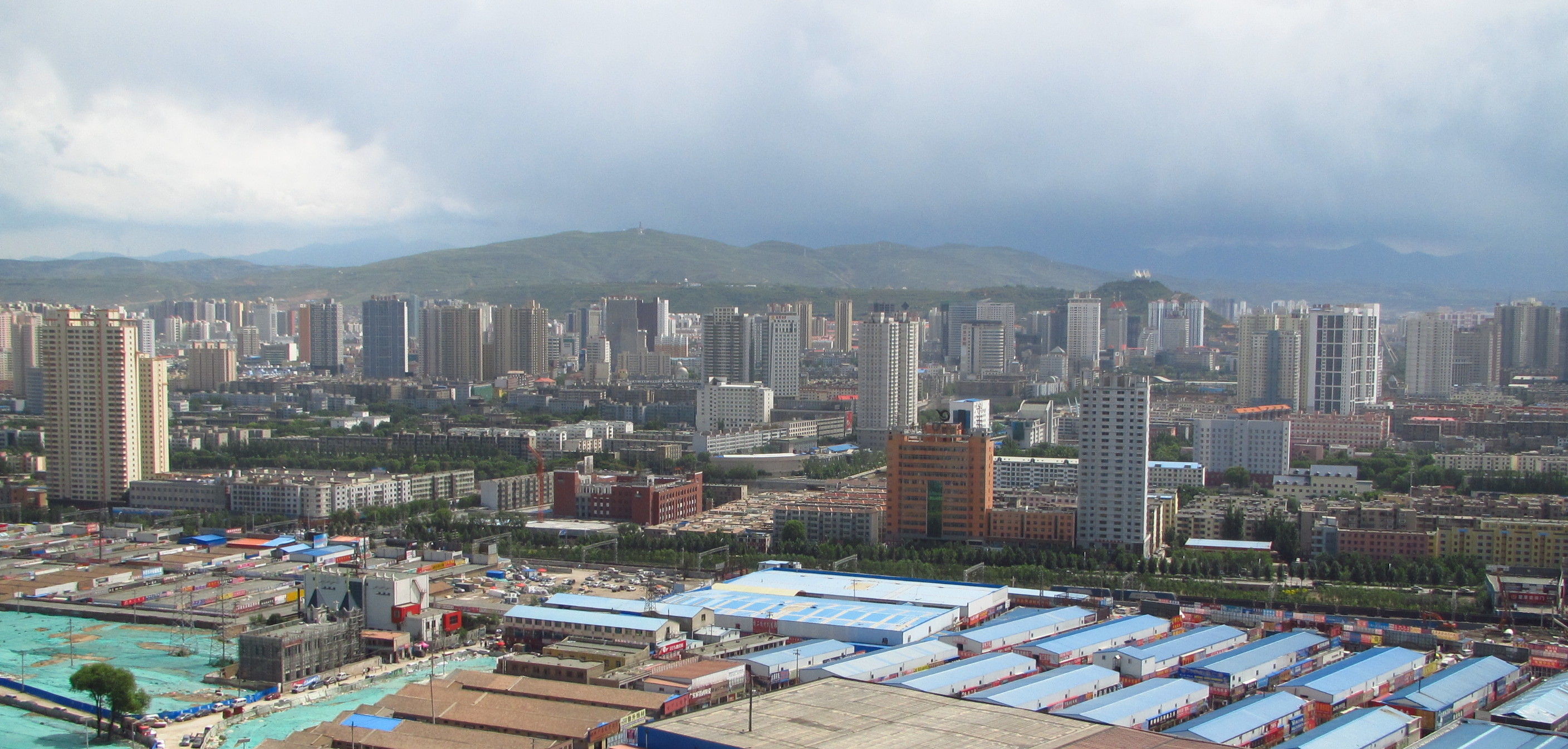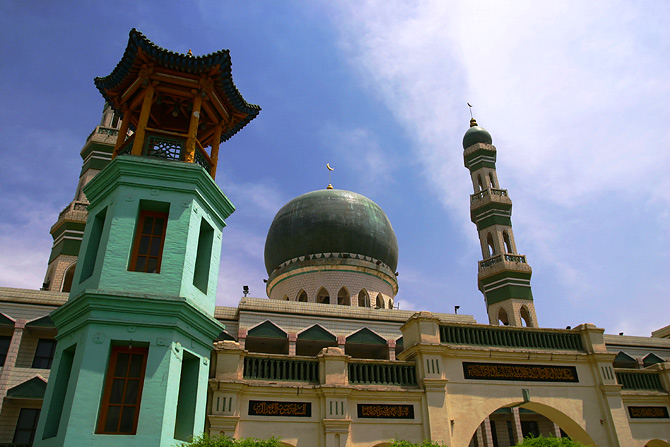|
Xihai Jun
Xihai Jun (西海郡) is a prefecture of ancient China located in Qingzang Plateau. ''Xi'' means west, ''Hai'' means sea, and ''Jun'' is a kind of administrative unit above county in ancient China and may be translated as prefecture or province. Xihai Jun or Xihai Prefecture was first established in the 4th year of Yuanshi (元始四年, AD 4) in the Han dynasty. The site of the Longqi (龍耆), the capital city of Xihai Jun in the Han dynasty, is located on the south bank of Huangshui River (湟水), near Qinghai Lake at {{coord, 36.9074, N, 100.9809, E, display=inline,title. Today, it is called Sanjiao Cheng (三角城, Delta City). It is near the county town of Haiyan County (海晏縣) and 90 kilometers west to Xining City, the capital city Qinghai province. In the 23rd year of Zhenguan (貞觀二十三年, AD 649), King of Xihai Jun (西海郡王) was conferred upon Songtsen Gampo (松贊幹布), the King of Tubo (吐蕃, or Tibet), by Tang Gaozong (唐高宗), the emperor ... [...More Info...] [...Related Items...] OR: [Wikipedia] [Google] [Baidu] |
China
China, officially the People's Republic of China (PRC), is a country in East Asia. It is the world's List of countries and dependencies by population, most populous country, with a Population of China, population exceeding 1.4 billion, slightly ahead of India. China spans the equivalent of five time zones and Borders of China, borders fourteen countries by land, the List of countries and territories by land borders, most of any country in the world, tied with Russia. Covering an area of approximately , it is the world's third List of countries and dependencies by area, largest country by total land area. The country consists of 22 provinces of China, provinces, five autonomous regions of China, autonomous regions, four direct-administered municipalities of China, municipalities, and two special administrative regions of China, Special Administrative Regions (Hong Kong and Macau). The national capital is Beijing, and the List of cities in China by population, most populous cit ... [...More Info...] [...Related Items...] OR: [Wikipedia] [Google] [Baidu] |
Qingzang Plateau
The Tibetan Plateau (, also known as the Qinghai–Tibet Plateau or the Qing–Zang Plateau () or as the Himalayan Plateau in India, is a vast elevated plateau located at the intersection of Central, South and East Asia covering most of the Tibet Autonomous Region, most of Qinghai, western half of Sichuan, Southern Gansu provinces in Western China, southern Xinjiang, Bhutan, the Indian regions of Ladakh and Lahaul and Spiti (Himachal Pradesh) as well as Gilgit-Baltistan in Pakistan, northwestern Nepal, eastern Tajikistan and southern Kyrgyzstan. It stretches approximately north to south and east to west. It is the world's highest and largest plateau above sea level, with an area of (about five times the size of Metropolitan France). With an average elevation exceeding and being surrounded by imposing mountain ranges that harbor the world's two highest summits, Mount Everest and K2, the Tibetan Plateau is often referred to as "the Roof of the World". The Tibetan Plateau c ... [...More Info...] [...Related Items...] OR: [Wikipedia] [Google] [Baidu] |
Han Dynasty
The Han dynasty (, ; ) was an Dynasties in Chinese history, imperial dynasty of China (202 BC – 9 AD, 25–220 AD), established by Emperor Gaozu of Han, Liu Bang (Emperor Gao) and ruled by the House of Liu. The dynasty was preceded by the short-lived Qin dynasty (221–207 BC) and a warring interregnum known as the ChuHan contention (206–202 BC), and it was succeeded by the Three Kingdoms period (220–280 AD). The dynasty was briefly interrupted by the Xin dynasty (9–23 AD) established by usurping regent Wang Mang, and is thus separated into two periods—the #Western Han, Western Han (202 BC – 9 AD) and the #Eastern Han, Eastern Han (25–220 AD). Spanning over four centuries, the Han dynasty is considered a golden age (metaphor), golden age in Chinese history, and it has influenced the identity of the History of China, Chinese civilization ever since. Modern China's majority ethnic group refers to themselves as the "Han Chinese, Han people", the Sinitic langu ... [...More Info...] [...Related Items...] OR: [Wikipedia] [Google] [Baidu] |
Qinghai Lake
Qinghai Lake or Ch'inghai Lake, also known by #Names, other names, is the list of lakes by area, largest lakes of China, lake in China. Located in an endorheic basin in Qinghai Province, to which it gave its name, Qinghai Lake is classified as an alkaline lake, alkaline saline lake, salt lake. The lake has fluctuated in size, shrinking over much of the 20th century but increasing since 2004. It had a surface area of , an average depth of , and a maximum depth of in 2008. Names Qinghai is the romanization of Chinese, romanized Standard Chinese pinyin pronunciation of the name Although modern Chinese distinguishes between the colors blue and green, Blue–green distinction in language, this distinction did not exist in classical Chinese. The color (''qīng'') was Blue–green distinction in language#Chinese, a "single" color inclusive of both blue and green as separate shades. (English for ''qīng'' is cyan or turquoise, also linguists have coined the portmanteau "grue" to ... [...More Info...] [...Related Items...] OR: [Wikipedia] [Google] [Baidu] |
Haiyan County, Qinghai
Haiyan County (; ) is a county of Qinghai Province, China, located on the northeast shore of Qinghai Lake. It is under the administration of Haibei Tibetan Autonomous Prefecture. It is home to 原子城 (Atomic Bomb city) covering 570 km² Climate Economy A major nuclear research facility, Plant 221 (), was established in 1958 at the location called Jinyintan () in Haiyan County. By CHRIS BUCKLEY and ADAM WU JAN. The New York Times, 20, 2018 See also *List of administrative divisions of Qinghai
[...More Info...] [...Related Items...] OR: [Wikipedia] [Google] [Baidu] |
Xining
Xining (; ), alternatively known as Sining, is the capital of Qinghai province in western China and the largest city on the Tibetan Plateau. The city was a commercial hub along the Northern Silk Road's Hexi Corridor for over 2000 years, and was a stronghold of the Han, Sui, Tang, and Song dynasties' resistance against nomadic attacks from the west. Although long a part of Gansu province, Xining was added to Qinghai in 1928. Xining holds sites of religious significance to Muslims and Buddhists, including the Dongguan Mosque and Ta'er Monastery. The city lies in the Huangshui River valley, and owing to its high altitude, has a cool climate on the borderline between cool semi-arid and dry winter humid continental. It is connected by rail to Lhasa, Tibet and connected by high-speed rail to Lanzhou, Gansu and Ürümqi, Xinjiang. The city is home to Qinghai University, a comprehensive university and the only Project 211 university in Xining. History Xining has a hist ... [...More Info...] [...Related Items...] OR: [Wikipedia] [Google] [Baidu] |
Qinghai
Qinghai (; alternately romanized as Tsinghai, Ch'inghai), also known as Kokonor, is a landlocked province in the northwest of the People's Republic of China. It is the fourth largest province of China by area and has the third smallest population. Its capital and largest city is Xining. Qinghai borders Gansu on the northeast, Xinjiang on the northwest, Sichuan on the southeast and the Tibet Autonomous Region on the southwest. Qinghai province was established in 1928 during the period of the Republic of China, and until 1949 was ruled by Chinese Muslim warlords known as the Ma clique. The Chinese name "Qinghai" is after Qinghai Lake, the largest lake in China. The lake is known as Tso ngon in Tibetan, and as Kokonor Lake in English, derived from the Mongol Oirat name for Qinghai Lake. Both Tso ngon and Kokonor are names found in historic documents to describe the region.Gangchen Khishong, 2001. ''Tibet and Manchu: An Assessment of Tibet-Manchu Relations in Five Phases ... [...More Info...] [...Related Items...] OR: [Wikipedia] [Google] [Baidu] |
Songtsen Gampo
Songtsen Gampo (; 569–649? 650), also Songzan Ganbu (), was the 33rd Tibetan king and founder of the Tibetan Empire, and is traditionally credited with the introduction of Buddhism to Tibet, influenced by his Nepali consort Bhrikuti, of Nepal's Licchavi dynasty, as well as with the unification of what had previously been several Tibetan kingdoms. He is also regarded as responsible for the creation of the Tibetan script and therefore the establishment of Classical Tibetan, the language spoken in his region at the time, as the literary language of Tibet. His mother, the queen, is identified as Driza Thökar (). The date of his birth and of when he took the throne are not certain. In Tibetan accounts, it is generally accepted that he was born in an Ox year of the Tibetan calendar, which means one of the following dates: 557, 569, 581, 593, 605 or 617 CE. He is thought to have ascended the throne at age thirteen (twelve by Western reckoning), by this reckoning c. 629. There are ... [...More Info...] [...Related Items...] OR: [Wikipedia] [Google] [Baidu] |
Tibet
Tibet (; ''Böd''; ) is a region in East Asia, covering much of the Tibetan Plateau and spanning about . It is the traditional homeland of the Tibetan people. Also resident on the plateau are some other ethnic groups such as Monpa people, Monpa, Tamang people, Tamang, Qiang people, Qiang, Sherpa people, Sherpa and Lhoba peoples and now also considerable numbers of Han Chinese and Hui people, Hui settlers. Since Annexation of Tibet by the People's Republic of China, 1951, the entire plateau has been under the administration of the People's Republic of China, a major portion in the Tibet Autonomous Region, and other portions in the Qinghai and Sichuan provinces. Tibet is the highest region on Earth, with an average elevation of . Located in the Himalayas, the highest elevation in Tibet is Mount Everest, Earth's highest mountain, rising 8,848.86 m (29,032 ft) above sea level. The Tibetan Empire emerged in the 7th century. At its height in the 9th century, the Tibet ... [...More Info...] [...Related Items...] OR: [Wikipedia] [Google] [Baidu] |
Tang Gaozong
Emperor Gaozong of Tang (21 July 628 – 27 December 683), personal name Li Zhi, was the third emperor of the Tang dynasty in China, ruling from 649 to 683; after January 665, he handed power over the empire to his second wife Empress Wu (the future Wu Zetian), and her decrees were carried out with greater force than the decrees of Emperor Gaozong's. Emperor Gaozong was the youngest son of Emperor Taizong and Empress Zhangsun; his elder brothers were Li Chengqian and Li Tai. Emperor Gaozong's reign saw the primacy of Empress Wu, who became the effective power behind the Tang rule. Emperor Gaozong was aided in his rule by Empress Wu during the later years of his reign after a series of strokes left him incapacitated. Emperor Gaozong effectively after January 665 delegated all matters of state to his strong wife; After that Empress Wu acted as the power behind the emperor, "hanging the curtain and listening to politics" (''Chuílián tīngzhèng'' 垂簾聼政). Gaozong's pers ... [...More Info...] [...Related Items...] OR: [Wikipedia] [Google] [Baidu] |
Tang Dynasty
The Tang dynasty (, ; zh, t= ), or Tang Empire, was an imperial dynasty of China that ruled from 618 to 907 AD, with an interregnum between 690 and 705. It was preceded by the Sui dynasty and followed by the Five Dynasties and Ten Kingdoms period. Historians generally regard the Tang as a high point in Chinese civilization, and a golden age of cosmopolitan culture. Tang territory, acquired through the military campaigns of its early rulers, rivaled that of the Han dynasty. The Lǐ family () founded the dynasty, seizing power during the decline and collapse of the Sui Empire and inaugurating a period of progress and stability in the first half of the dynasty's rule. The dynasty was formally interrupted during 690–705 when Empress Wu Zetian seized the throne, proclaiming the Wu Zhou dynasty and becoming the only legitimate Chinese empress regnant. The devastating An Lushan Rebellion (755–763) shook the nation and led to the decline of central authority in the dynas ... [...More Info...] [...Related Items...] OR: [Wikipedia] [Google] [Baidu] |






